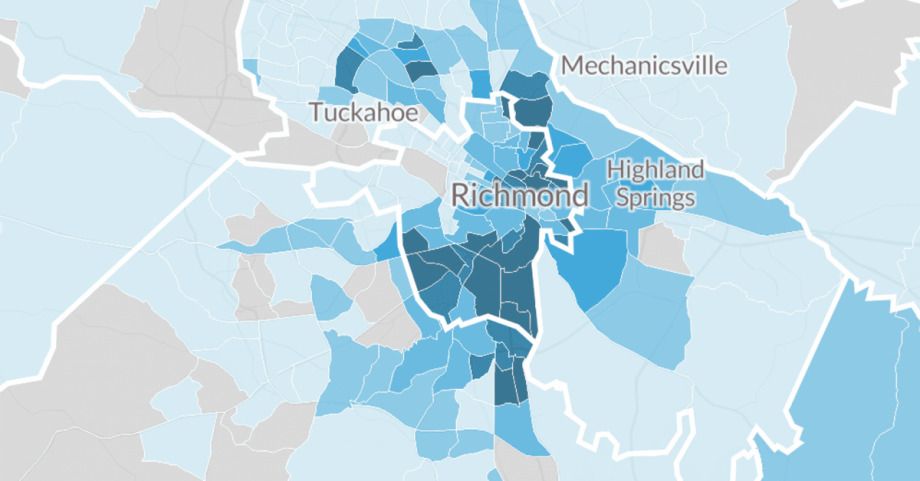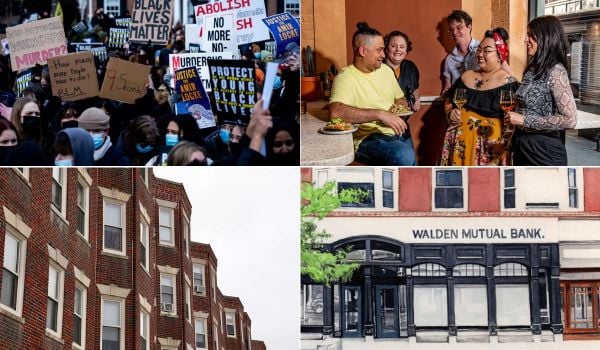Who Needs Housing Assistance Most?
As eviction protections and unemployment benefits begin to expire, the Urban Institute has developed a tool to help jurisdictions determine the most effective ways to direct scarce rental assistance to families in need.
The tool, called the Emergency Rental Assistance Priority Index, “estimates the level of need in a census tract by measuring the prevalence of low-income renters who are at risk of experiencing housing instability and homelessness,” according to the Urban Institute. It incorporates data from every census tract in the United States. In addition to poverty measures, the tool incorporates additional “risk factors,” like the prevalence of people of color in a given neighborhood, who have been “historically and systematically excluded from housing and economic opportunities and face greater health and economic impacts from COVID-19.” Census tracts are ranked in terms of their levels of need against other census tracts within each state, in order to help state and local lawmakers determine priorities.
“COVID-19 has exasperated the homelessness and affordable housing crises in America and we’re seeing more people than ever at risk of losing their homes,” Samantha Batko, a senior research associate at the Urban Institute, said in a press release. “As local policymakers and community organizations work together to provide relief to families, our new tool is an additional asset in ensuring the most vulnerable renters receive the assistance they need.”
Neighborhoods Segregated by Redlining See Hotter Temperatures
Movements for racial justice in the United States have gained steam over the past few years, and helped to create a broader public awareness of the long-lasting discriminatory impacts of historic housing practices and government policies like redlining. The consequences of those policies and practices go beyond racial and economic segregation and can include environmental impacts, as the New York Times reports. According to the story, researchers have found that formerly redlined neighborhoods have fewer trees, parks and green spaces than others today, and therefore their temperatures tend to be hotter.
“Across more than 100 cities, a recent study found, formerly redlined neighborhoods are today 5 degrees hotter in summer, on average, than areas once favored for housing loans, with some cities seeing differences as large as 12 degrees,” the story says. “Redlined neighborhoods, which remain lower-income and more likely to have Black or Hispanic residents, consistently have far fewer trees and parks that help cool the air. They also have more paved surfaces, such as asphalt lots or nearby highways, that absorb and radiate heat.”
Higher temperatures during heat waves can lead to greater risks of cardiac arrest, asthma, and death, according to the story. And hotter neighborhoods will face even greater risks as the climate continues to warm. Neighborhood racial inequities also have implications for climate change planning, as cities contend with the need to plant trees and create parks and green amenities that cool down neighborhoods without accelerating gentrification, according to the report.
“We can see that racial equity and climate equity are inherently entwined, and we need to take that into account when we’re building our capacity to prepare,” Alicia Zatcoff, the sustainability manager for Richmond, Virginia, told the paper. “It’s a new frontier in climate action planning and there aren’t a lot of cities that have really done it yet.”
More Money for Eviction Legal Help in San Francisco
Earlier this year, San Francisco was facing the prospect of pandemic-related cuts to the budget for a two-year-old program that provides legal counsel for tenants who are facing evictions. But after housing advocates and members of the Board of Supervisors protested, funding for the city’s Tenant Right to Counsel program was restored. And now the program is actually going to be expanded, according to a press release from San Francisco Supervisor Dean Preston, who wrote the ballot measure that created the program.
“We are taking a major step forward to making sure every tenant facing eviction gets legal representation,” Preston said in the press release. “I appreciate the support of my colleagues in not only standing up to proposed cuts, but in expanding the right to counsel program at a time when it is desperately needed to keep renters in their homes.”
After facing an initially proposed cut of $1 million, the program will now receive an additional $750,000, according to the release. The Right to Counsel program provides a lawyer for tenants facing evictions. Legal representation often helps tenants avoid being removed from their homes. During the first year of the program’s operation, evictions were down 10 percent in San Francisco, according to a previous release from Preston’s office, and 700 families were able to stay in their homes in the first six months of the program. Of the people who received representation through the program in its first year, 85 percent were low-income or extremely-low-income tenants, according to the release.
This article is part of Backyard, a newsletter exploring scalable solutions to make housing fairer, more affordable and more environmentally sustainable. Subscribe to our weekly Backyard newsletter.

Jared Brey is Next City's housing correspondent, based in Philadelphia. He is a former staff writer at Philadelphia magazine and PlanPhilly, and his work has appeared in Columbia Journalism Review, Landscape Architecture Magazine, U.S. News & World Report, Philadelphia Weekly, and other publications.
Follow Jared .(JavaScript must be enabled to view this email address)


















